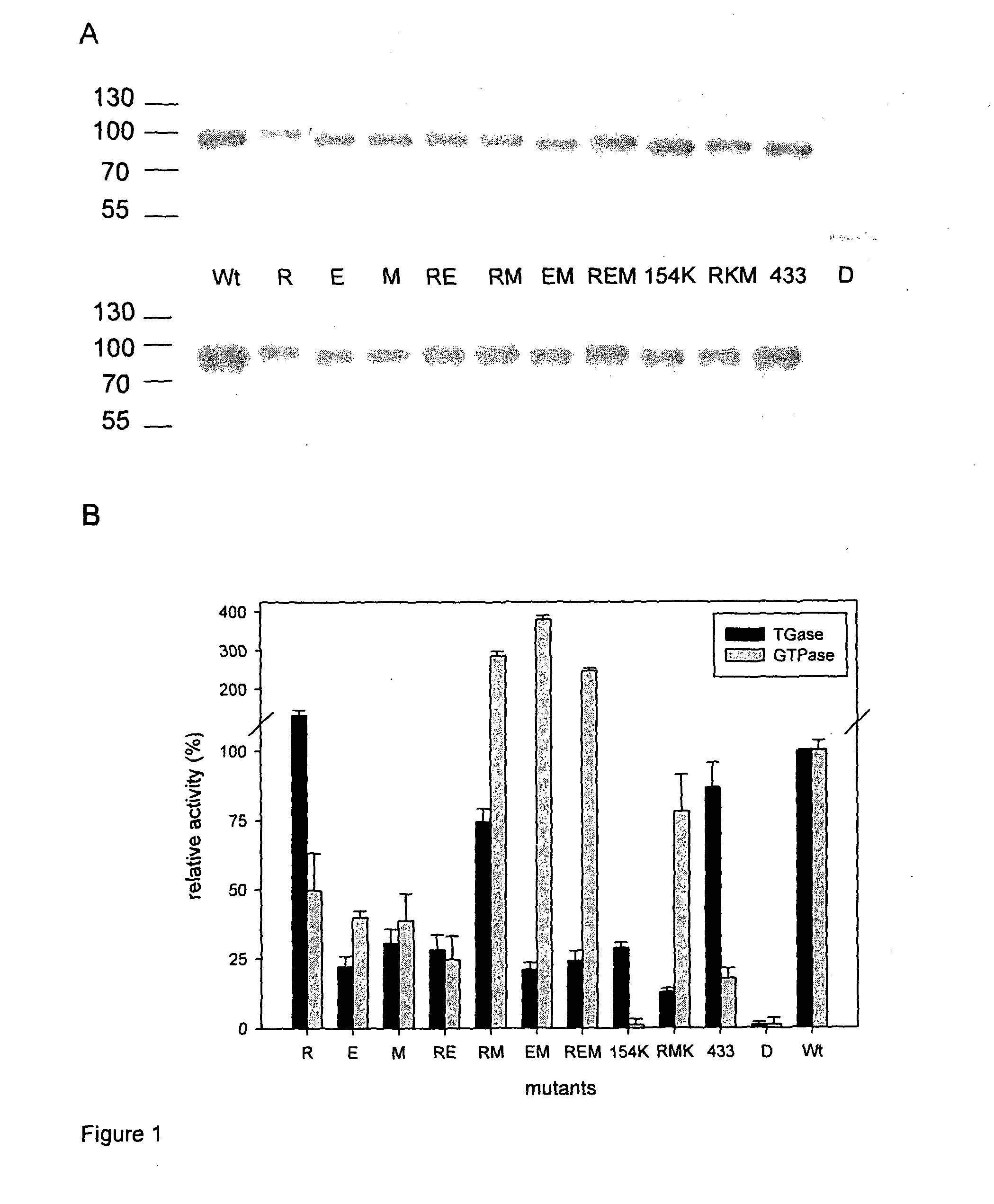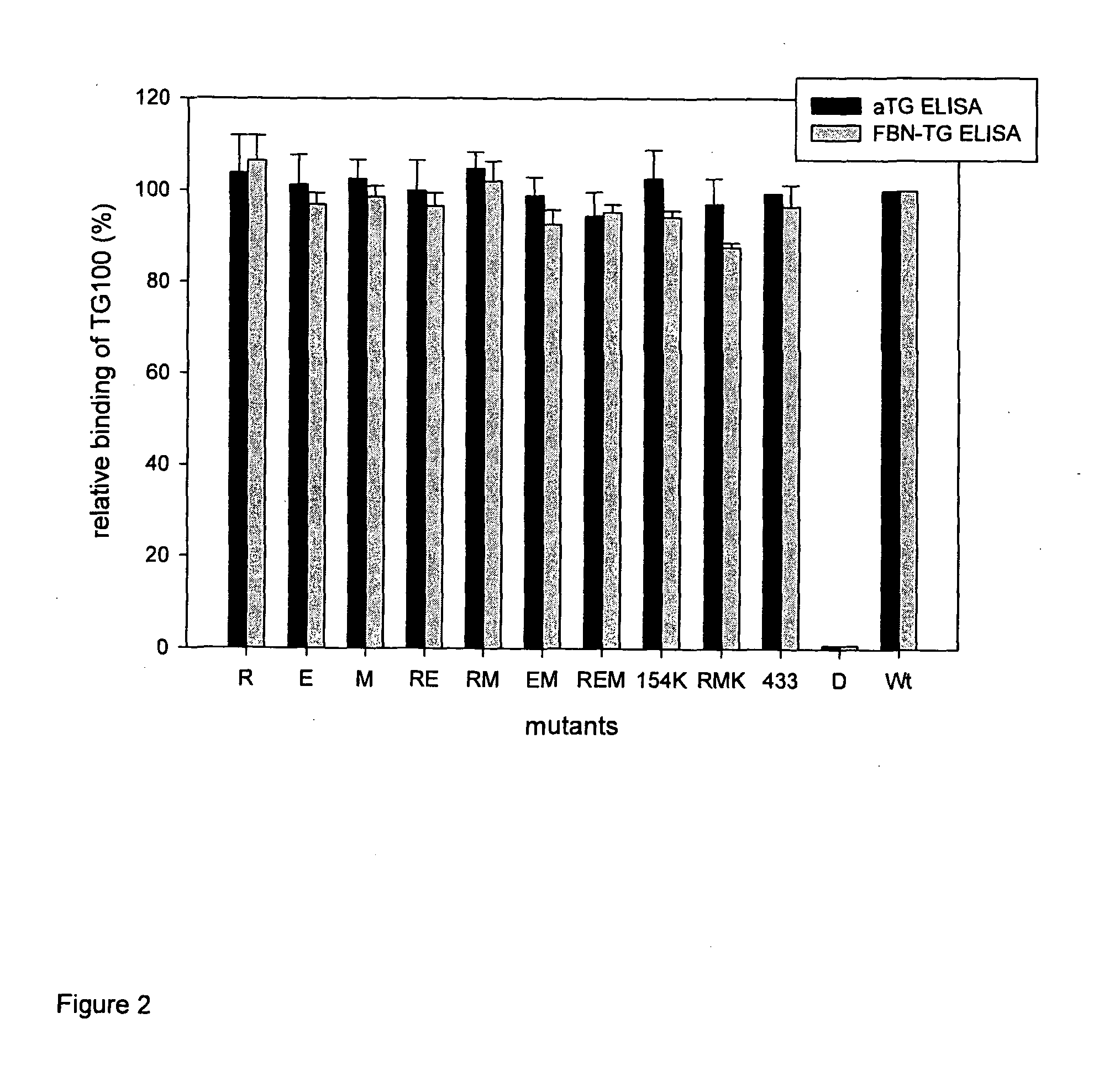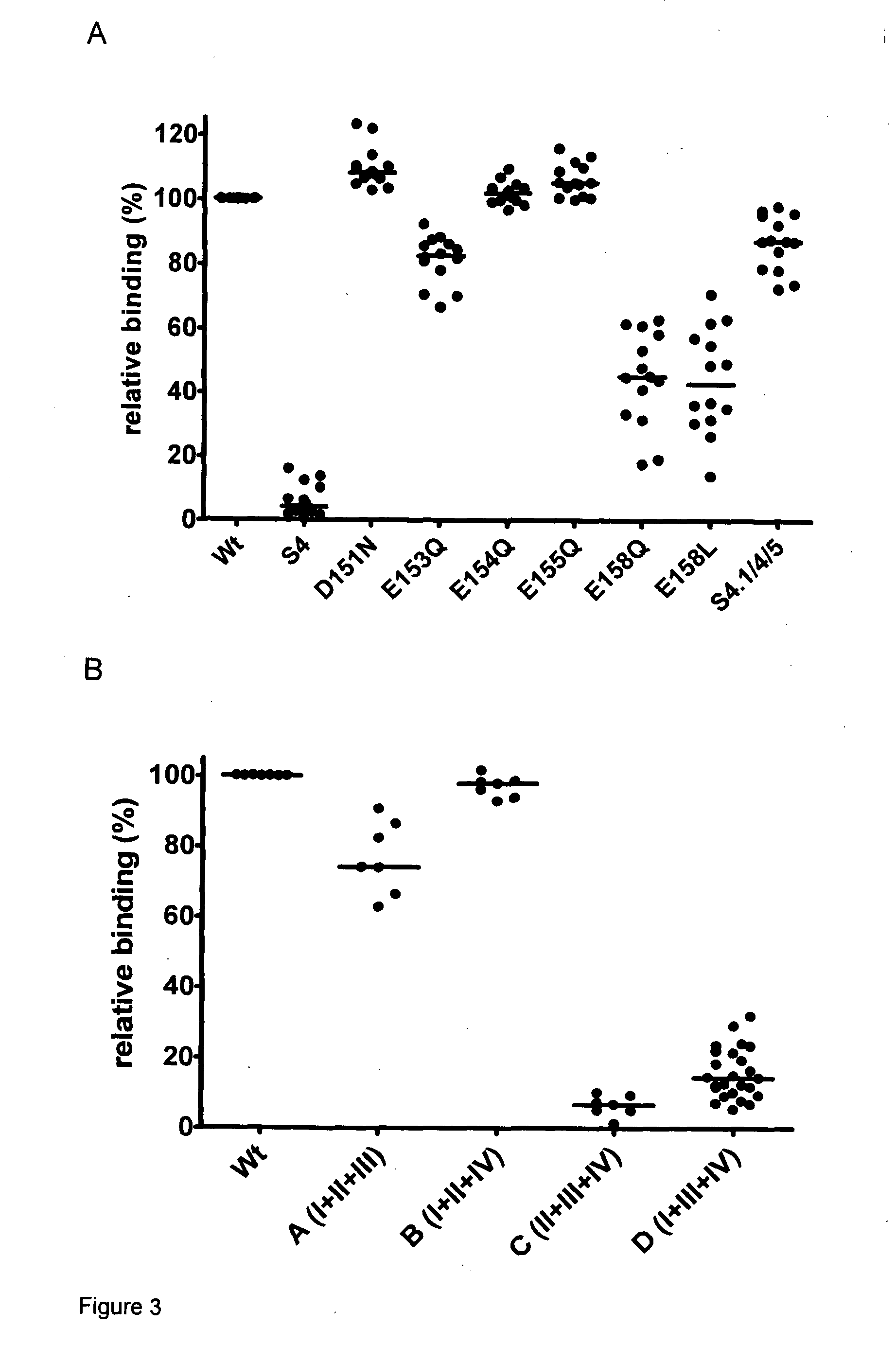Diagnosis of Gluten-Induced Autoimmune Diseases
- Summary
- Abstract
- Description
- Claims
- Application Information
AI Technical Summary
Benefits of technology
Problems solved by technology
Method used
Image
Examples
example 1
[0288]Materials and Methods
[0289]1.1 Molecular Modelling
[0290]Residues 1-14, 44-55 and 123-132 were missing in the crystal structure of human TG2 (PDB code: 1 KV3) [Liu S et al, Proc Natl Acad Sci USA. 2002; 99(5):2743-7.] however, the corresponding regions were visible in the TG3 structure (PDB code: 1VJJ,) [Ahvazi B et al., EMBO J. 2002; 21(9):2055-67.], so this was used for modelling the full-length TG2. Homologous model was built by Modeller [Sali A, Blundell T L, J Mol Biol. 1993; 234(3):779-815.] using the multiple template option of the program. Graphical analysis was made on Silicon Graphics Fuel workstation using Sybyl program package (Tripos, St. Louis, Mo.), and a study was made to search for amino acids that are located near enough to each other but belong to different domains. Particularly, the interface of the core domain with the N-terminal (I) domain and the interface of the core domain with the C-terminal (IV) domain were investigated. Preference was given to charge...
example 2
[0343]Preliminary Experiments to Localize the Celiac Epitope
[0344]Binding of Celiac Antibodies is Related to a Calcium Binding Site of TG2
[0345]During examination of Ca2+ binding of human TG2 we identified two negatively charged surface patches on the core domain that are near to each other and could serve as Ca2+ binding sites. Multiple mutations of acidic glutamate and aspartate residues to neutral glutamine and asparagine in Site4 (151DSEEERQE158→151NSQQQRQQ158) or Site 5 (434DERED438→4434NQRQN438) led to the decrease of the number of bound Ca2+ ions per TG2 molecule from 6 to 3 and also diminished the binding of celiac patient serum samples substantially (Site 4, residual binding compared to wild TG2 11.6±-8.5%) or moderately (Site 5, 51.3±16.0%) in enzyme-linked immunoassay (ELISA). These ELISA assays were performed with serum samples from 62 celiac disease patients (age at diagnosis 1-42 years) and 20 disease control subjects (age 1-17 years). The serum samples were collected ...
example 3
[0355]Effects of Mutations in the Putative Celiac Epitope and Related Surface Areas
[0356]Based on the preliminary results and computational analysis, within a larger set of amino acids 6 amino acids (R19, D151, E153, E154, E155, M659) were identified that are on or adjacent to the surface of TG2 related to Site 4 and close enough to each other to potentially form composite epitopes. These residues were changed one by one (single mutants) or in combination (double and triple mutants) by site-directed mutagenesis to serine or in case of acidic residues to their neutral homologues.
[0357]We prepared the following point mutant TG2 molecules: E153S (E), R19S(R), M659S (M) or the respective mutations in combination (D151N / E154Q / E155Q, RE, EM, RM, REM, E154K / R19S / M659S [RKM]), and tested the proteins with a large set of consecutive patient serum samples (n=76). Relative amounts of bound antibodies were calculated by comparison to a calibrator curve constructed from the concentration depende...
PUM
 Login to View More
Login to View More Abstract
Description
Claims
Application Information
 Login to View More
Login to View More - R&D
- Intellectual Property
- Life Sciences
- Materials
- Tech Scout
- Unparalleled Data Quality
- Higher Quality Content
- 60% Fewer Hallucinations
Browse by: Latest US Patents, China's latest patents, Technical Efficacy Thesaurus, Application Domain, Technology Topic, Popular Technical Reports.
© 2025 PatSnap. All rights reserved.Legal|Privacy policy|Modern Slavery Act Transparency Statement|Sitemap|About US| Contact US: help@patsnap.com



